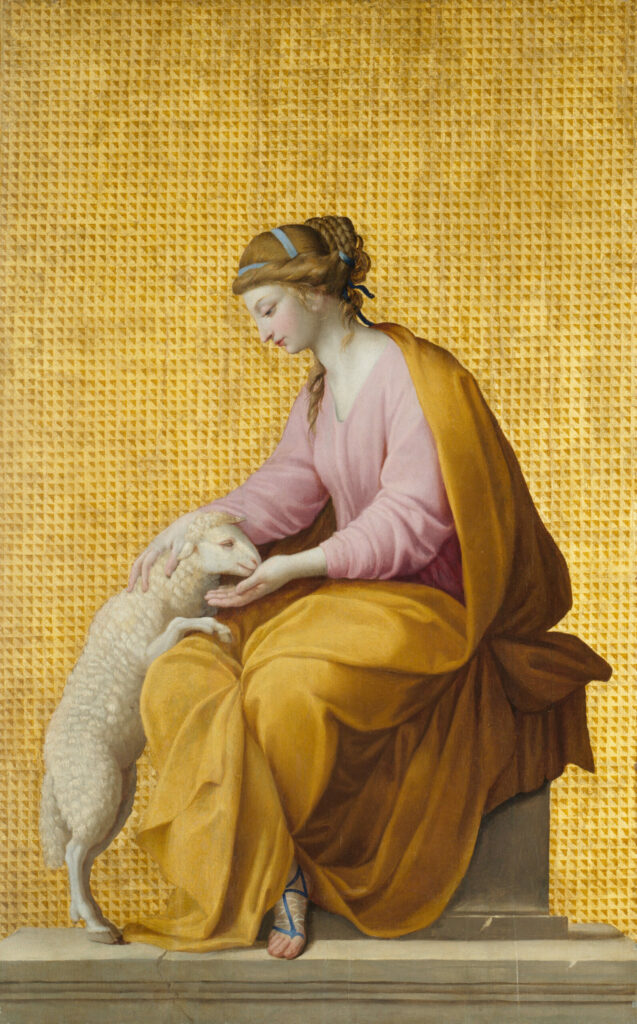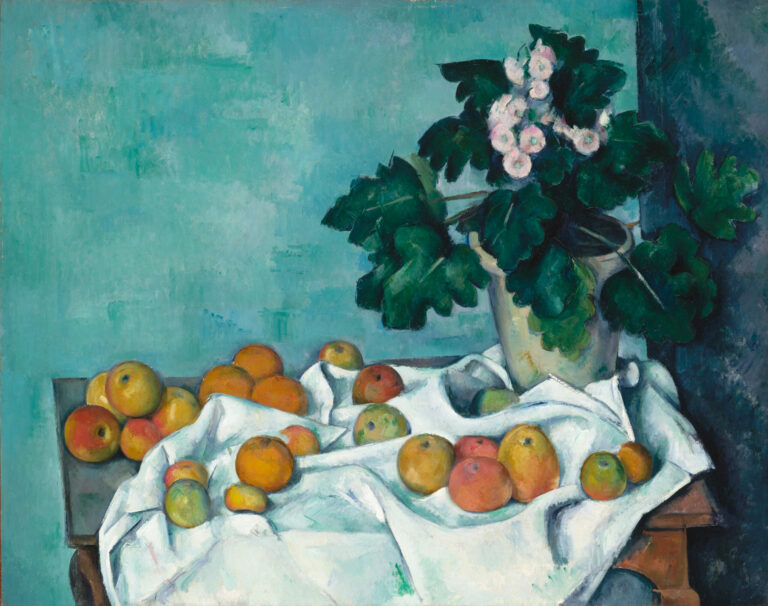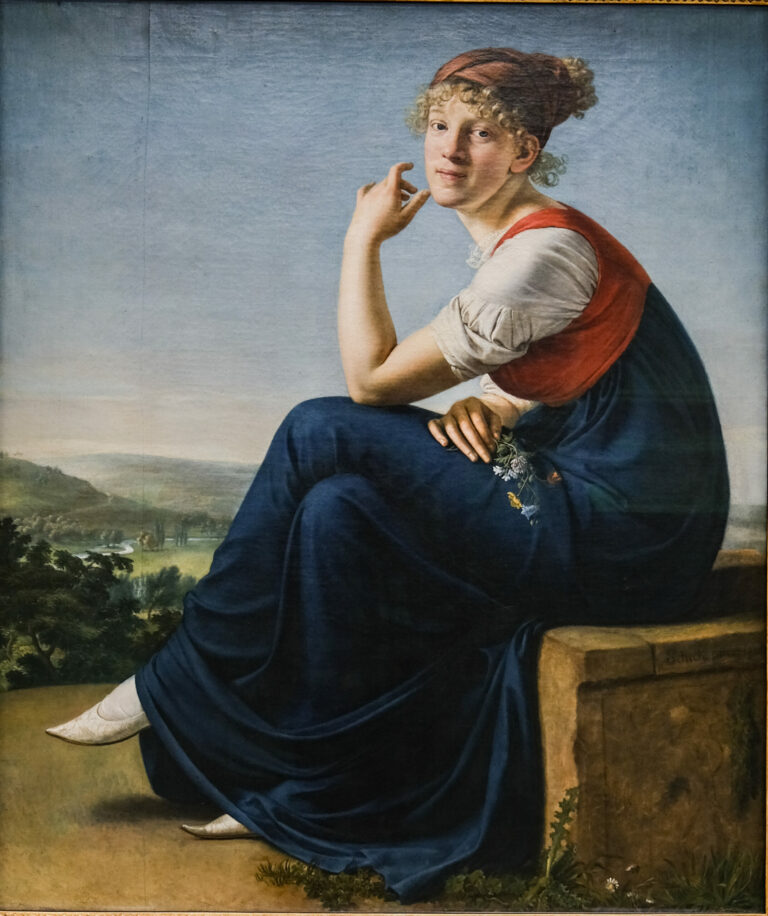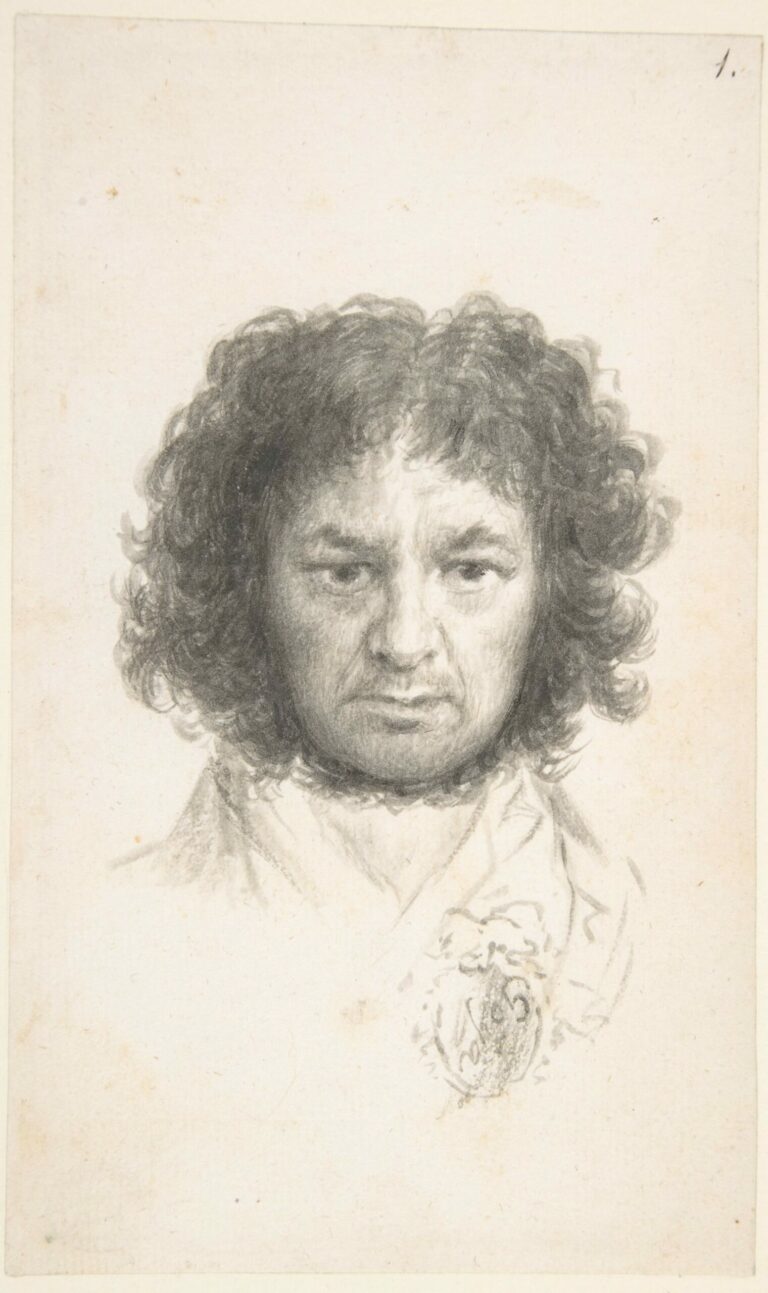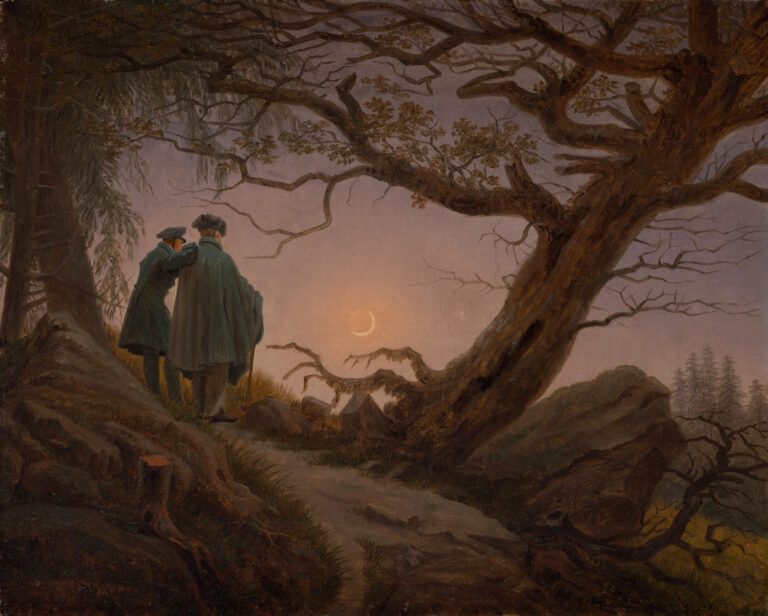A Refined Allegory of Virtue. In this work of exquisite elegance, Le Sueur presents a striking allegory of Gentleness, one of the Beatitudes (“Blessed are the meek, for they shall inherit the earth”).
Against a luxuriant gold background with subtle geometric patterns, a young woman gracefully bends toward a white lamb, symbol of innocence. Dressed in a pale pink gown and draped in a sumptuous ochre mantle, she embodies tenderness in its purest expression. The contrast between the gentleness of her gesture, delicately caressing the animal, and the visual richness of the golden background creates a compelling pictorial tension.
The refined composition, limited yet powerful color palette, and meticulous attention to detail demonstrate impeccable technical mastery and spiritual sensitivity characteristic of 17th-century French religious art.
Essential Information
- Title and Date: “Gentleness” or “Meekness” by Eustache Le Sueur, 1650
- Dimensions: 100.7 × 67 cm
- Location: The Art Institute of Chicago, European Paintings and Sculptures, Gallery 209
- https://www.artic.edu/artworks/47159/meekness
Eustache Le Sueur (1616-1655), sometimes called “the French Raphael,” was one of the founders of the Royal Academy of Painting and Sculpture. A major figure in French classicism, he developed a distinctive style marked by clarity, balance, and restrained emotion, departing from the flamboyant Baroque then in fashion. Trained under Simon Vouet, Le Sueur distinguished himself through authentic religious sensitivity and a pictorial approach of great purity.
Despite a relatively brief career—he died at 38—he left a considerable body of work, primarily religious, that had a lasting influence on French painting. His masterpiece, the cycle of 22 paintings on the life of Saint Bruno for the Carthusian cloister in Paris, perfectly illustrates the spiritual depth and elegant sobriety that characterize his art.

